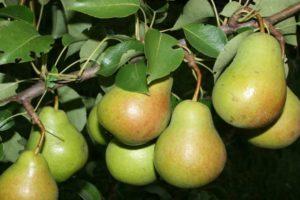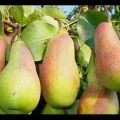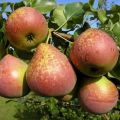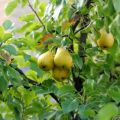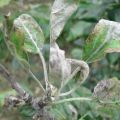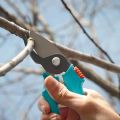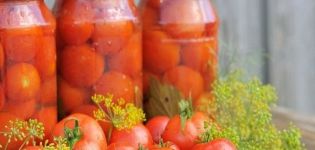How to properly propagate a pear with green cuttings and other methods in summer and spring
Growing a pear in a garden plot, gardeners come to the conclusion that the tree needs to be propagated. All these activities can be avoided if you buy a separate seedling, but it is expensive. An alternative option arises - getting a fruit tree at home. Is it possible to propagate a pear and how to do it?
Pear breeding methods
You can get a new seedling or several at once in the following ways:
- seed;
- vegetative.
The first method is easy enough. As a rule, problems appear at later stages of tree growth. The yield of pears obtained by this method is very low.
Vegetative method - pear propagation by branches and cuttings. Vegetative propagation is the most popular among professionals and amateur gardeners. Combines ease of use, fast tree growth and good yield.
In recent years, two more methods of reproduction have been widely practiced - by air layers and by root shoots.
Green cuttings
Today, gardeners no longer wonder whether it is possible to grow a pear using a similar method. The technology was originally known exclusively to agronomists working in the field of agriculture. Now summer residents are actively using this method. People make green cuttings and process them with the mixture to speed up growth.
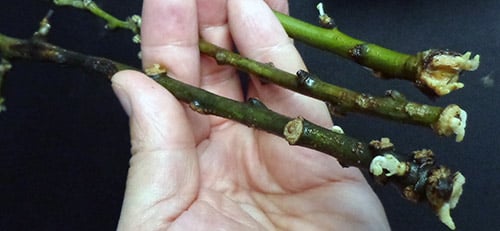
The best varieties for grafting
Most Popular:
- Lada;
- Memory of Zhegalov;
- Muscovite;
- Autumn Yakovleva.
Pear varieties are great for propagation by cuttings.
How to prepare cuttings
First you need to select the appropriate specimens. First of all, pay attention to the top of the shoot, it should be greenish. The lower part is roughened and covered with bark. The branches of the tree begin to be covered with leaves, with the exception of a few upper buds.

When preparing planting material, the following conditions are adhered to:
- Shoots are cut early in the morning before the sun rises. At this time, they are filled with moisture.
- Cutting is performed from the bottom up (towards the kidney). The cut angle is 45 °.
- Choose a sharp knife for cutting. If necessary, they sharpen it. The sharper the knife, the easier the tree will endure the procedure.
Before cutting the sprout, the knife must be disinfected. Thanks to this, infection of the tree can be avoided. The wound that remains on the tree after cutting is treated with clay.
Planting and rooting
The preparation of the seat in summer and spring is the same.For seedlings, a box with a height of 30-40 cm is selected. The third part of the volume is filled with a nutritious substrate. Then comes the sand, which must be calcined.
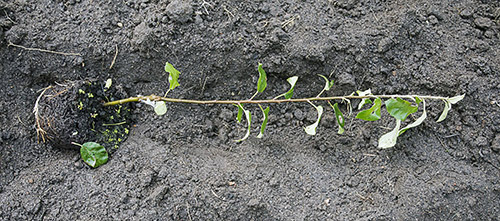
Selected cuttings are planted to a depth of 1.5 cm. Excessive immersion causes the development of decay. In the spring, the box is covered with foil to create greenhouse conditions.The leaves on the shoots should not come into contact with the leaves of the adjacent cutting. Direct contact with glass or film is inadmissible.
Air layering
Suitable if the pear has no basal processes. On a young tree, they find a two-year-old branch and bend it to the soil, substituting a box with earth under it. Using a wire or soft rope, the branch is attached to the box so that part of the bark is in the soil. After a while, the cuttings grow into the ground, forming a root system. When the seedling gets stronger, it can be planted from the mother tree. Growing a pear with air layers is easy. The sprout takes root in a new place without any problems.

Seed propagation
You can also grow a pear in another way - by planting seeds in the soil. To do this, a person has to go through the following stages:
- A container with fertile soil is being prepared.
- The seeds of the pear variety you like are placed in a box.
- As soon as the emerging seedling grows up, it is transplanted into a larger container than the previous one. The procedure is repeated 2 more times.
- After that, the young seedling should be planted in a permanent place.
The selected landing technology has disadvantages. Gardeners who have tried the method note poor seedling growth. A young tree does not bear fruit for a long time. If pears appear on a tree, they differ in taste and shape.
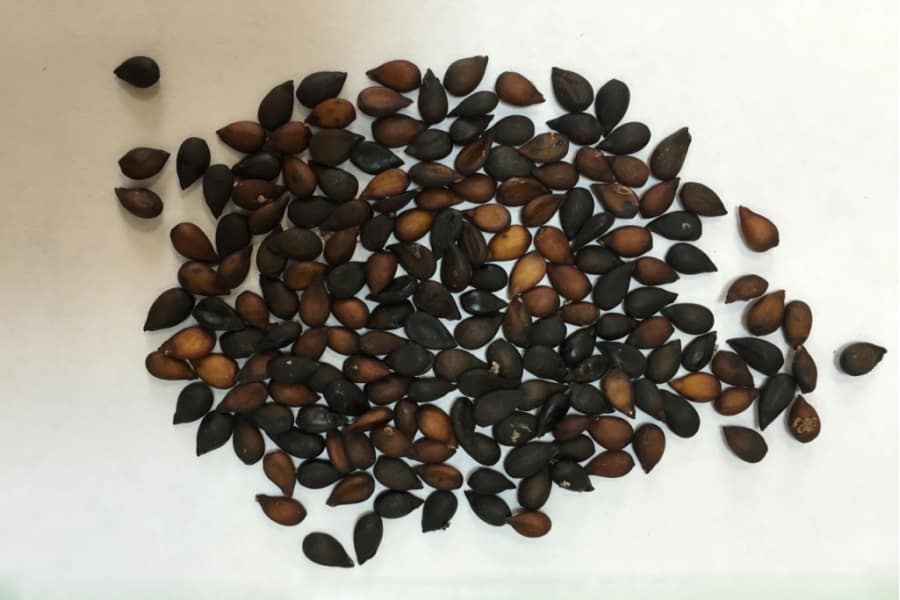
Vegetative propagation
This method involves the use of cuttings, which, after cutting, are grafted onto a fruit tree. With the help of vegetative propagation, the onset of fruiting is accelerated. The harvest that the pear gives has an original taste. But not everything is as simple as it seems. There should be a tree in the garden, ready for grafting cuttings.
If there is none, you will have to start preparing the basis for vaccination. It's possible to get another variety from a branch that has been grafted onto a tree, but it will take a lot of effort.
Propagation by root shoots
Fruit trees tend to form small shoots from the roots. Saplings appear at the base of the trunk. Few people know that sprouts can be dug up and transplanted to another place. The seedlings have their own root system and take root well.

This method is good in that a person is not required to plant sprouts separately or sow seeds to get a young tree. The mother tree will take care of this. All that is required of a person is to dig out a seedling. A young culture is growing very quickly. If you provide it with proper care, fertilize it and water it regularly, it will eventually turn into an adult tree that will produce a full harvest. In the future, this pear will become suitable for breeding.
Proper care of planted seedlings and cuttings
The man chose the pear propagation method, having done all the stages of the procedure, and the seedling grows poorly or does not develop at all. Gardeners often face this situation. There may be several reasons for this phenomenon. The first is the use of low-quality planting material, the second is non-observance of the rules for caring for a young tree.

Pear is a whimsical plant that needs constant care. Important measures consist of a lot of procedures that form a care complex:
- Watering.
- Elimination of weeds in the area of the trunk circle.
- Mulching the soil.
- Fertilization.
- Insect pest control.
- Regular pruning of branches.
- Preventive measures.
- Treatment of diseases.
- Removal of fallen leaves with further burning.
- Warming for the winter.
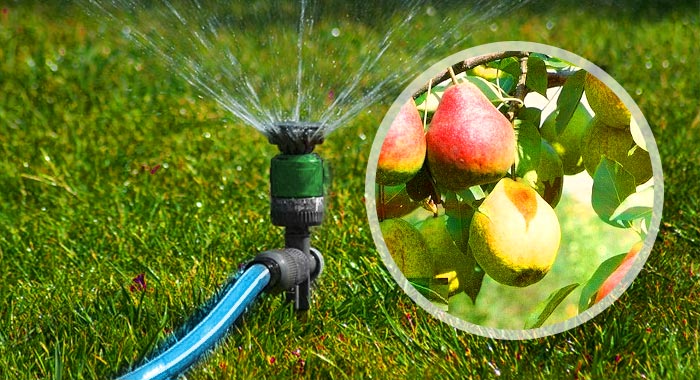
Each procedure has its own time. If you do not neglect the rules and do everything right, in 5-8 years the seedling will turn into an adult tree. Fruiting depends on the quality of care.
Spring
As soon as the threat of late frosts has passed, the insulation is removed from the tree. The trunk circle is loosened, saturating the soil with fertilizers. It is recommended to cut the branches before the start of sap flow. A pear needs preventive treatment so that pests and diseases do not affect growth and fruiting ability.
Summer
In the hottest time of the year, watering is at the forefront of maintenance activities. The pear should not need moisture. Watering too often leads to root rot, so it is better to stick to the "golden mean". In order to prevent thickening of the crown, the branches are pruned.
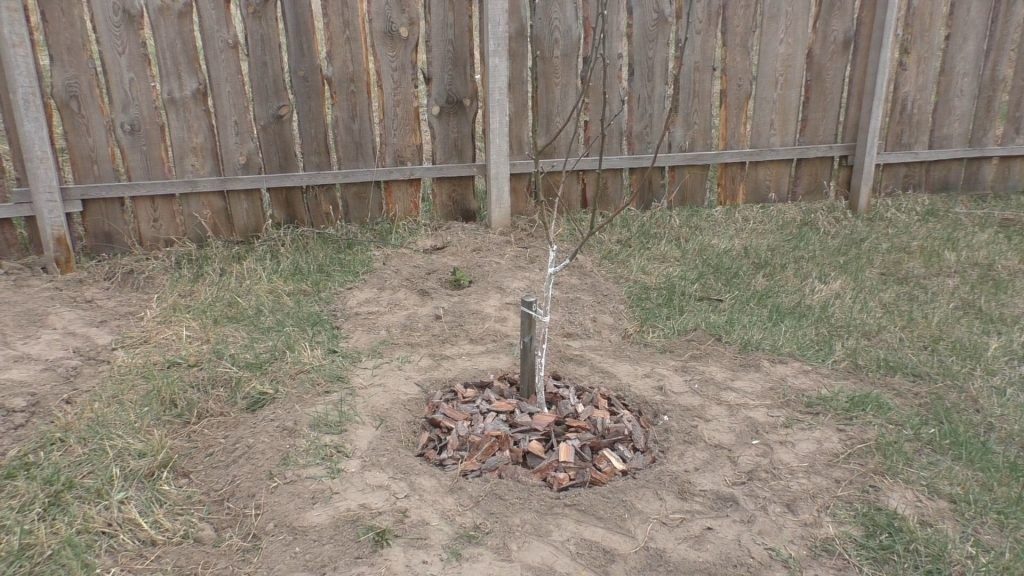
Fall
The procedures carried out in the spring are repeated in the autumn. The tree needs sanitary pruning, feeding and pest prevention. Whitewashing of the trunk is also added to the care measures. The second half of the last autumn month is a great time to prepare the tree for winter.
Regarding watering
In the first year after planting a seedling in a new place, watering is carried out every week. In the future, the frequency is reduced to 1 time in 2 weeks. If the summer is particularly hot, the young tree should be watered much more often. After moistening, the soil is loosened, thus providing an oxygen flow to the root system. At the end, mulching is carried out. The ground around the trunk of the pear should not dry out and be crusty.
Conclusion
Once the pear is planted in a permanent place, it may not show signs of development. If this is observed for 1-1.5 years, the seedling is dug up and another specimen is planted. To get a seedling, several shoots are planted at once. Pear is a fruit tree designed for multiplication in different ways. The fulfillment of the conditions of each method will give a positive result. Soon, a person will enjoy ripe, sweet, aromatic and juicy pears.
